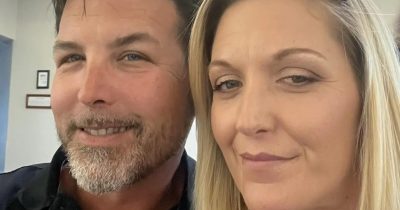
An aesthetics doctor in California made a bold educational move by using herself as a “lab rat” to demonstrate the paralyzing effects of blasting botox into your face.
Botox, known medically as a neurotoxic protein, does much more than fight wrinkles – it blocks the nerve signals to muscles, preventing them from contracting.
Typically, the results of the prescription drug, botulinum toxin, is smoother, more youthful-looking skin – temporary effects that last three to six months, demanding regular maintenance for anyone chasing that ageless glow.
Rather than just telling people about Botox’s capabilities, Dr. Bita Farrell, a world-renowned aesthetic doctor and clinical professor at UCLA, offers her followers – 240,000 on Instagram and another 185,000 on Facebook – visually stunning demonstrations, all “for the sake of science.”
Relaxed and stiff
Two weeks before she posted her viral social media clip, the doctor injected only the lower face muscles in the right side of her face to show people the real-life effects of Botox injections.
Explaining her Botox experiment in the caption of the clip, Dr Farrell writes: “Muscles of the face either pull up or pull down. When the muscles that pull the lower face down (platysma and DAO) are injected and relaxed with a Neuromodulator such as Botox, the muscle that pulls the mid face up (zygomaticus or cheek muscle) dominates and pulls the face up!
“This can help reduce the appearance of marionette lines, jowls, frown (rbf [resting b**** face], or sad face), and the nasolabial folds. It also lifts the neck and can sharpen the jawline and make the cheeks appear a bit fuller and more lifted.”
She adds that results last about three to four months, and “any of the FDA approved Neuromodulators can be used.”
Jaw-dropping lift
In the jaw-dropping reveal clip, the board-certified physician drew a line down the center of her face and shared the results with her social media followers.
“And now for you, two weeks later, I present my results as I try and contract my lower face muscles watch this,” Farrell said in the clip where she’s seen struggling to get movement out of the treated half.
“You can see that the platysma muscle on this [left] side is really contracting and pulling my jawline down, and so is my DAO, pulling the corner of my mouth down,” said Dr. Farrell.
“I’m really trying to pull this side!” she exclaimed in the clip, straining to move the injected muscles.
Pointing at the side of her face that she treated, she continues, “See that this cheek rides a bit higher, this nasal labial fold seems softer and so does my shadow at the marionette on this side.”
“Now I better go inject the other side to even things out!” she joked at the end of the video.
Limited movement
In the viral video, the difference between Dr. Farrell’s two facial halves couldn’t have been more obvious. On the untreated (left) side, natural expressions played freely across her features. On the Botox-treated (right) side, however, movement was dramatically reduced.
Beyond the movement – or lack thereof – the Botoxed side of her face revealed subtler enhancements: her cheek appeared slightly lifted, the nasolabial fold (the line from the nose to the mouth) softened, and the shadows around the marionette lines were less pronounced.
By limiting Botox to one side, she created an easy-to-understand side-by-side comparison that made it crystal clear just how powerfully Botox can reshape facial dynamics – without needing a 10-page study to explain it.
What people say
The comments flooded in almost immediately, with viewers praising the experiment’s clarity and marveling at the visible results. In a world obsessed with youth and beauty, seeing Botox’s real effects this transparently was a refreshing – and mesmerizing – twist.
“For the same sake – I will try that too, just on both sides,” shares one online user.
A second writes, “This is an amazing demonstration of the effects of Botox. It really is amazing! Thanks for doing this. I am actually shocked to see how big of a difference it makes.”
Others, however, pointed out that the untreated side of her face looked “better.”
“It’s funny because I think the side you didn’t inject looks better…Younger! You have less under eye wrinkles on your left side,” pens one user, while another asks, “So, at one side she looks paralyzed. is that good?”
And then there were the critics who offered their harsh opinions on Dr. Farrell’s self-experimentation: “After so many years of study and effort, what drives a doctor to masquerade as a clown to gain visibility? This trend is mortifying.”
In the sea of beauty myths and airbrushed marketing, Dr. Farrell gave us something rare: authenticity and education wrapped into one compelling – and immaculately half-frozen – face.
What do you think of Dr. Farrell’s Botox experiment? Please let us know what you think and if her clips inspire you to get – or not get – Botox, and then share this story so we can hear from others!
READ MORE
- Online users beg Barbara Eden, 93, to quit botox after transformation leaves fans stunned
- Plastic surgeon reveals damage fillers do in long term




